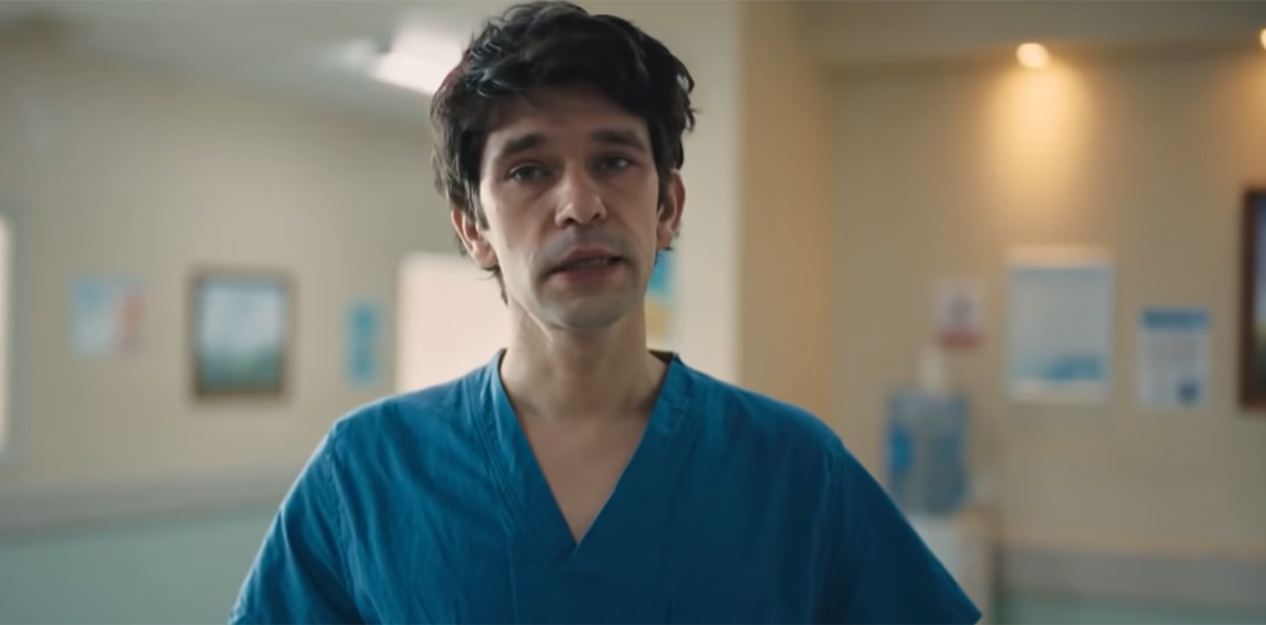Created by Adam Kay, ‘This is Going to Hurt’ flips the script on conventional medical procedural narratives by giving an unvarnished take on the life of a junior doctor named Adam Kay. Working on the obstetrics and gynaecology ward of St. Clare’s Hospital, Adam barely has time to catch his breath, as each case brings a unique challenge along with it. That is not all, however, as he also has to navigate through the hospital’s complicated power dynamics and poor working conditions, which affect not just him but also his colleagues and patients alike. Soon, this begins to chip away at his personal relationships, forcing him into a corner with seemingly no way out. More often than not, St. Clare’s becomes not just the backdrop to Kay’s adventures but the actual driving force behind the narrative, and by the end of this medical drama series, it transforms into a character in and of itself.
A Real Hospital in West London Doubles as the Fictional St. Clare’s Hospital
Although St. Clare’s is a fictional hospital penned by Adam Kay for the narrative of ‘This is Going to Hurt,’ there is a possibility that it partially references one of the hospitals where Adam previously worked as a doctor, namely Ealing Hospital. Situated on 601 Uxbridge Road in the Southall district of England, Ealing Hospital is a general NHS (National Health Service) hospital that also served as the filming location for all the exterior shots of St. Clare’s in the show. Notably, in one of the climactic sequences of the show, a memorial oak tree is planted on the hospital grounds. Following this, fans eagerly visited Ealing Hospital, only to discover that the tree was a show-only feature and had not been planted on the actual grounds. Following popular interest, on August 4, 2022, Adam Kay collaborated with the hospital to plant the long-awaited tribute sapling in the same location. This, in turn, further cemented the show’s ties to the real-life institution.

Although ‘This is Going to Hurt’ is based on Adam’s eponymous memoir, which vividly depicts the ebbs and flows of his time as a doctor, the book never makes the exact details surrounding his profession explicit, and that includes the name of his hospital. While talking to Newsweek, he explained that “It was a deliberate thing in the book because I’d go to prison if I identify a patient, or I’d get excommunicated from my family, or I’d be struck off from the GMC [the General Medical Council] if I identify colleagues.” For the television adaptation of his memoir, Adam constructed a number of fictional characters to ground the story further, and St. Clare’s Hospital likely serves a similar effect. However, given the fact that Adam has not commented on the narrative connection between St. Clare’s and Ealing Hospital, the parallels between the two are likely a coincidence.
Adam Kay’s Personal Experiences Helped Shape St. Clare’s Hospital
While the exteriors of St. Clare’s are brought to life through Ealing Hospital, creating the interior of the fictional hospital proved to be a bigger challenge. Production for the show took place during the COVID-19 pandemic, which made filming on-site an unlikely route for the production team. Instead, the hospital’s insides were created from scratch in a set, with each detail being customized to get as close to reality as possible. Reportedly, an unused university building located in Mile End, London, became the base for the set design, providing the creative team with enough room to authentically replicate the size and scale associated with a hospital. Producer Holly Pullinger described Adam’s reaction to the intricate set in her interview with TIME, where she stated, “When Adam stepped on set, he got chills. He thought he was back in the hospital.”

Although there are a number of plausible explanations as to why Adam Kay created a fictional hospital to tell his story, one possible reason is to expand on the universality of the narrative. ‘This is Going to Hurt’ is informed by Adam’s struggle with extreme working conditions, the emotional and psychological stress that comes with the job, and the mistreatment he often had to endure. While talking to the BBC about his past as a doctor, he described that “it’s a badge of honour to work as hard as possible, to never say anything is the matter, to constantly plough on” and to “‘get on with it'”. To that end, St. Clare’s doubles as a fictional platform to give voice to his lived experiences. Additionally, his creative touches surrounding the setting likely resulted from extensive research into doctors’ experiences at hospitals, which further amplifies his own story, as captured in the memoir.
Read More: Delhi Crime’s True Story: Is Noor Based on a Real Baby? What Happened to Baby Falak in Real Life?


You must be logged in to post a comment.